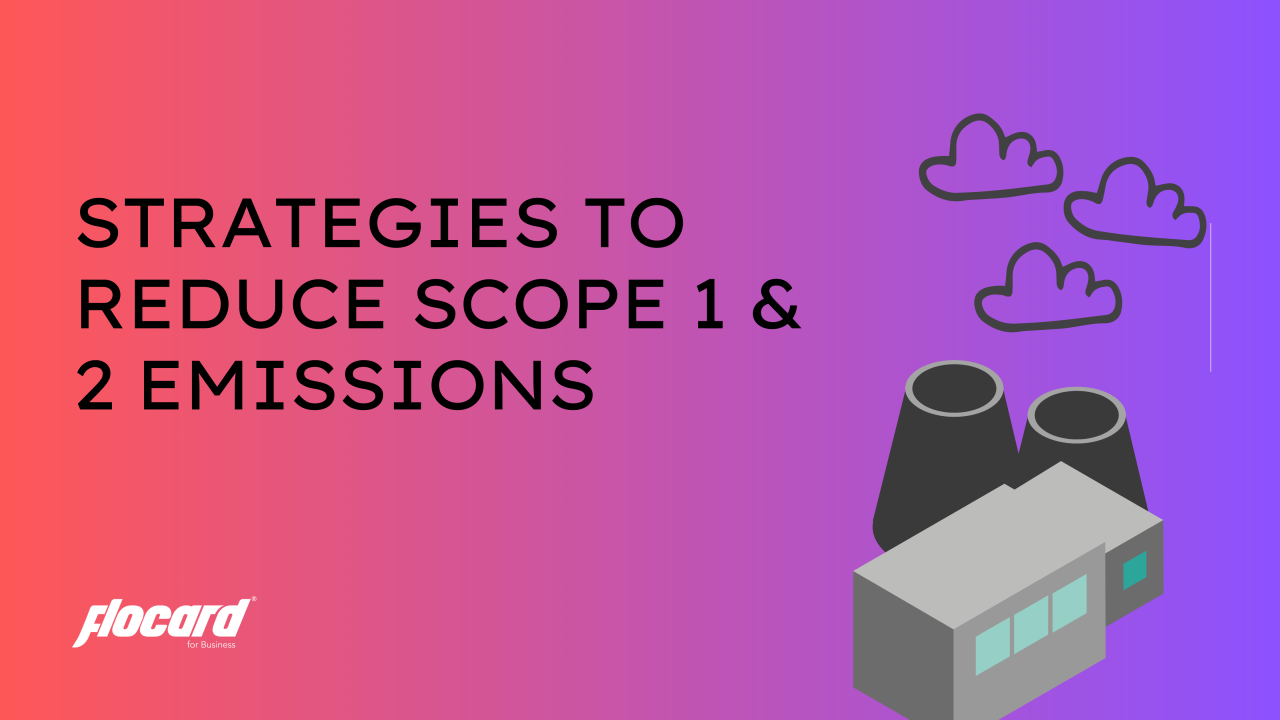Transforming Emissions to Solutions: Your Guide to Reducing Scope 1 and Scope 2 Impact

Scope 1 and scope 2 emissions are direct and indirect sources of emissions from an organization. These are a result of manufacturing, combustion, and transportation processes or may be generated by purchased electricity.
Companies feel the onus to impact sustainability positively by identifying direct and indirect sources of emissions. This initiative helps them devise strategies and steps to be implemented in their organizations and promote lower emission rates. Innovative strategies around reducing scopes 1 and 2 are important for the organization’s sustainable mission, and brand image and for reducing costs. This blog explores innovative strategies for reducing Scope 1 and Scope 2 emissions.
Mapping direct and indirect carbon emissions
Mapping carbon emissions using statistical procedures is crucial to determine the rate and the quantity of emissions. This is effective in rolling out new reduction plans. Mapping emissions can be done through the standard input-output method for spatial estimation of emission or industrial emissions data from the organization’s facility database. The use of Light detection technology and Geographic information systems for obtaining emission data can help policymakers identify the highest emitters.
Carbon reduction strategies
Energy-intensive industries and manufacturing hubs are the highest contributors to Green House Emissions (GHG) and the strategies must revolve around the reduction strategies on demand and supply sides. Energy reduction can be brought into the organization by introducing renewable energy in the power sector and switching to low-carbon fuels. Actions like investment in clean energy and energy-efficient technologies are important to reduce carbon emissions. It can include electrifying vehicles, transportation, biofuels, electric furnaces and waste recycling.
New carbon reduction technologies
New carbon reduction technologies that involve carbon capture, utilization and storage are a promising technology to reduce emissions. This involves capturing carbon dioxide from emitting sources and transporting and storing them in geological reserves. This can be utilised later in the production of chemicals, algae and building materials. Apart from this, decentralization of energy systems for organizations is also an efficient way to reduce Scope 1 emissions. Initiatives in the transportation sector with alternatives to fossil fuels like biofuels, electro-fuels, and electricity.
Renewable energy sources
Renewable energy sources are an alternative to fossil fuels and thus emit no GHG to the environment. Organizations that focus well on the use of solar energy, wind energy, tidal energy and use of water or biomass to drive their electricity requirement are doing a crucial job of reducing their Scope 1 and Scope 2 emissions.
Sustainable transportation solutions
Sustainable transportation solutions demand the use of eco-friendly transport mediums with alternative fuels as their source of energy for drive. Hydrogen and biofuels are the alternative fuels which contribute positively to GHG reduction in the environment. Electric vehicles promote carbon neutrality while hydrogen-powered vehicles reduce GHG emissions as they hardly emit one. Thus sustainable transportation is the solution to poor air quality, high carbon footprint and poor health of individuals.
Sustainable architecture
Sustainable architecture means using design principles to bring change in the structure of the building to prevent negative environmental impact. This means the implementation of green solutions to buildings and architecture, in general, is crucial to reduce carbon emissions. Optimizing natural ventilation and lighting reduces the consumption of electricity. The use of solar panels and geothermal sources of energy minimizes GHG emissions. It is seen that the use of sustainable materials like bamboo, wood and recycled steel promotes low or no emissions. The use of energy-efficient machines that consume low power helps in reducing Scope 1 and Scope 2 emissions.
In conclusion, transitioning to sustainable solutions is not merely a choice but a necessity in the fight against climate change. By prioritizing renewable energy sources, improving energy efficiency, and implementing innovative technologies, businesses can significantly reduce their Scope 1 and Scope 2 emissions. Embracing sustainability not only mitigates environmental impact but also enhances operational resilience and fosters a positive corporate image.
In summary, we've explored various innovative approaches to diminish Scope 1 and Scope 2 emissions, such as integrating renewable energy sources and leveraging advanced technologies for heightened energy efficiency. However, combatting climate change necessitates collective action and collaboration. Businesses must prioritize sustainability and actively embrace these inventive solutions for emission reduction. By pooling our efforts and committing to sustainable practices, we can pave the way for a more environmentally conscious future. Let's take the initiative in fostering a sustainable culture that not only benefits our organizations but also c ontributes to a healthier planet for generations to come. FloCard as an organization provides carbon-neutral solutions to reduce Scope 1 and Scope 2 emissions.
